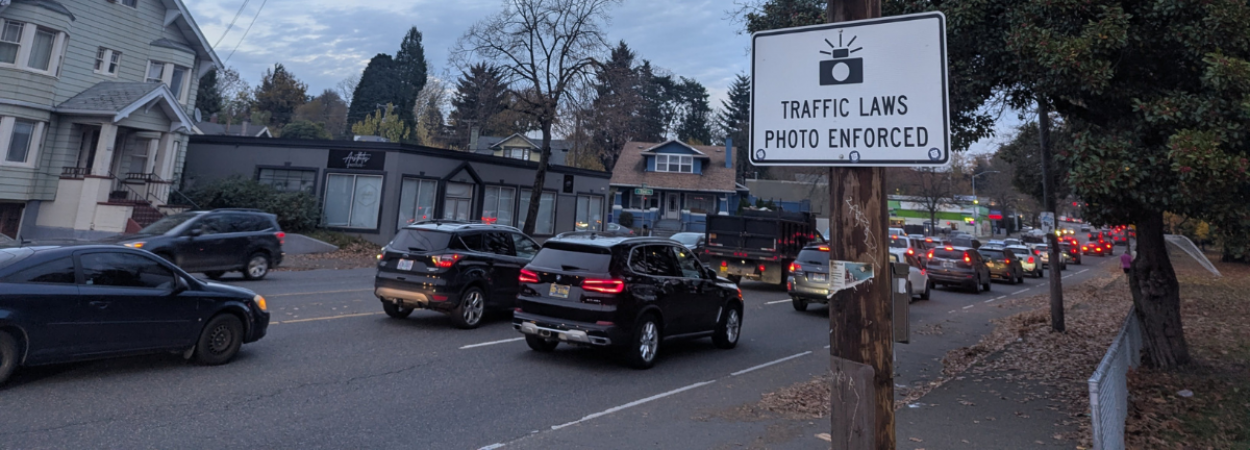A study led by researchers at Portland State University is helping shape the future of speed safety camera use across Oregon. The report combines national and international best practices to give the Oregon Department of Transportation (ODOT) a clear, evidence-based roadmap for how to expand speed safety camera use responsibly across the state.
The project was led by Professor Miguel Figliozzi of PSU’s Maseeh College of Engineering and Computer Science and graduate research associate Sophia Semensky, working with collaborators from Oregon State University.
Building Safer Streets through Data
The PSU research team gathered data on how speed safety cameras (SSCs) perform in real-world conditions and summarized best practices from cities across the U.S. and abroad, including New York City, Seattle, Philadelphia, Washington, D.C., France, and Australia. Their findings will guide ODOT’s next generation of SSC programs.
Portland’s Program Shows Major Gains
A major part of the study looked at Portland’s existing safety camera program, part of the Portland Bureau of Transportation's (PBOT) Vision Zero efforts, where fixed speed cameras have been installed on high-crash corridors. The results were dramatic:
- 71% decrease in speeding (drivers going 1 mph or more over the limit)
- 94% decrease in extreme speeding (11 mph or more over the limit)
- 43% reduction in both total crashes and speed-related crashes
These numbers make a strong case for how SSCs can save lives and prevent serious injuries.
Addressing Equity and Public Acceptance
The research also examined how speed cameras can be deployed fairly and gain public trust. Portland’s existing system includes options like diversion classes for first-time offenders to avoid fines. The analysis showed that 80% of tickets went to drivers passing through a neighborhood—not residents—suggesting the cameras don’t unfairly burden local communities.
Looking to national examples, the team reviewed alternative fine structures designed to make enforcement more equitable. Cities like New York and Seattle have implemented lower or adjustable fines based on income, an approach that Portland could consider if state law allows.
Informing Oregon’s Next Steps
The report offers ODOT practical recommendations for expanding SSC use. Key guidance includes:
- Choosing locations based on crash data, speed patterns, and equity considerations.
- Building public trust through transparency, such as publishing camera locations and outcomes.
- Improving operations by setting clear contracts and timelines for vendors.
- Targeting repeat offenders through interventions that focus on high-risk drivers.
A Model for Safer Roads
Nearly all studies reviewed in the report show that automated enforcement reduces both speeds and crashes. PSU’s work provides ODOT with a detailed, data-driven plan to expand these systems statewide—helping Oregon move closer to its goal of safer, more equitable roads for everyone.
The full 315-page report, Improving Guidance for Speed Safety Camera, is available through ODOT.
Portland State University's Transportation Research and Education Center (TREC) is a multidisciplinary hub for all things transportation. We are home to the Initiative for Bicycle and Pedestrian Innovation (IBPI), the data programs PORTAL and BikePed Portal, the Better Block PSU program, and PSU's membership in PacTrans, the Pacific Northwest Transportation Consortium. Our continuing goal is to produce impactful research and tools for transportation decision makers, expand the diversity and capacity of the workforce, and engage students and professionals through education, seminars, and participation in research. To get updates about what's happening at TREC, sign up for our monthly newsletter or follow us on social media.




